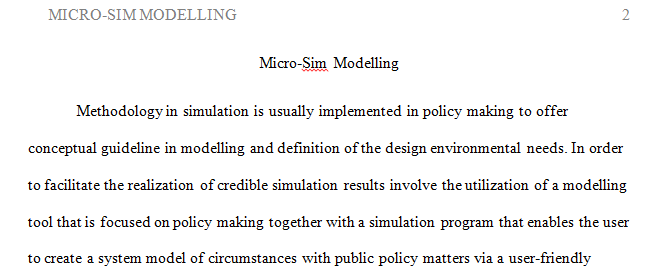
Summary on “The Quality of Social Simulation: An Example from Research Policy Modelling”
Micro-Sim Modelling
Subject – InfoTech in a Global Economy
Summary on “The Quality of Social Simulation: An Example from Research Policy Modelling”
The article explores the quality of a simulation. The authors test and apply assessment mechanisms using a sample policy modeling. The design aspect of simulations like Caffe Nero resembles that of a scientific social simulation (Ahrweiler & Gilbert, 2014). The authors develop models from a specified target by decreasing the attributes of the latter progressively. In each case, the aim is to derive a factor from the model that cannot be obtained automatically from the target. The article utilizes Caffe Nero simulation and the science simulation because travelling to Venice would be time consuming and expensive, and they cannot obtain information from the ‘real system’ to determine its behavior.
The authors use the standard view and the constructivist approach to evaluate each of the simulations. Based on these evaluations, the authors argue that a simulation is useful when one obtains the desired results from what they would have derived from the original target; the exploration of the simulation is influenced by the experiences, anticipations and experiences of the society members that utilize it. This would divert the user community’s attention to a highly viable approach to evaluate the efficiency of a policy modeling sample. To test this assumption, the authors examine concrete policy modeling and conclude that initial discussions and negotiations with the user community to determine their questions were iterative, interactive, and user-driven.
“The user community plays a vital role in providing data for calibration of the model because it is rather complex to confirm the availability, quality, and existence check, and data for database and format requirements” (Doran & Gilbert, 1994). From a user’s perspective, the quality of the simulation will depend on efficiency while calibrating the model and the quality of the primary data. Also, the user community has to cross-examine the credibility of the results of the simulation and has to affirm their quality.
What alternative methodology can facilitate the realization of credible simulation results with minimal practical contingencies?
References
Ahrweiler, P., & Gilbert, N. (2014). The Quality of Social Simulation: An Example from Research Policy. Miguel, Amblard, Barceló & Madella (eds.) Advances in Computational Social Science and Social Simulation Barcelona: Autònoma University of Barcelona, DDD repository
Doran, J. and N. Gilbert (1994): Simulating Societies: an Introduction. In: J. Doran and N. Gilbert (eds.): Simulating Societies: the Computer Simulation of social Phenomena. London: UCL Press, 1-18.
Answer preview…………

apa 1031 words